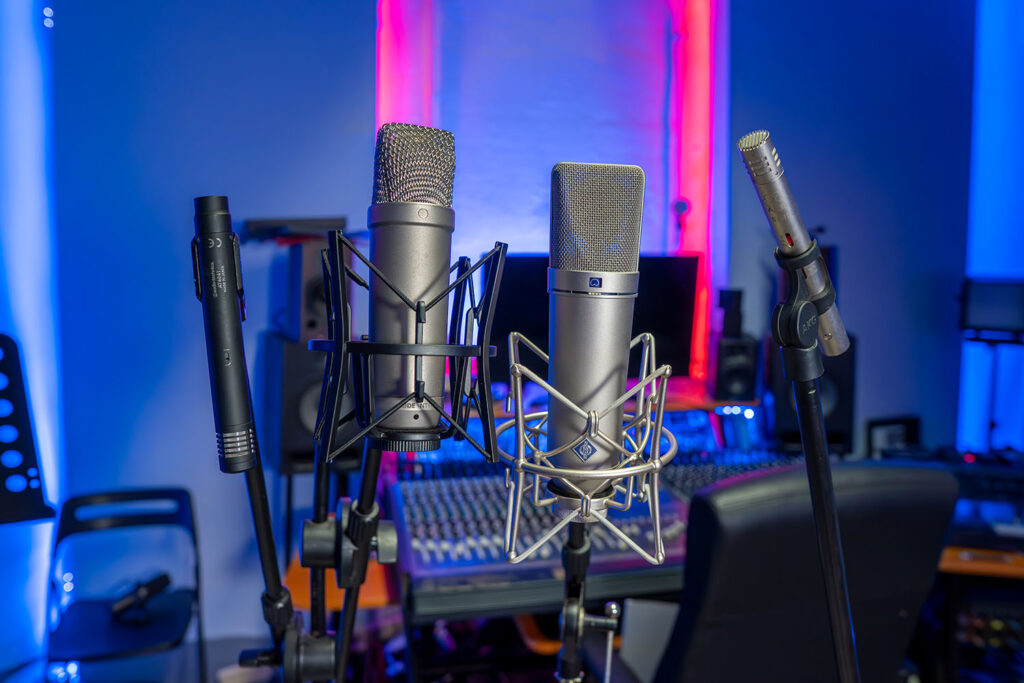What are condenser microphones?
Condenser microphones, like all microphones, convert sound waves into electrical waves. The way they work is based on an electrical capacitor. These microphones consist of a very thin, electrically conductive diaphragm that is attached directly to a metal plate.
The diaphragm and metal plate together form a plate capacitor. When sound hits the diaphragm, it causes it to vibrate, which changes the distance between the diaphragm and the metal plate. This also changes the capacitance (since it is directly related to the distance between the diaphragm and the metal plate), and finally the voltage between the plates (since the voltage is directly related to the capacitance).
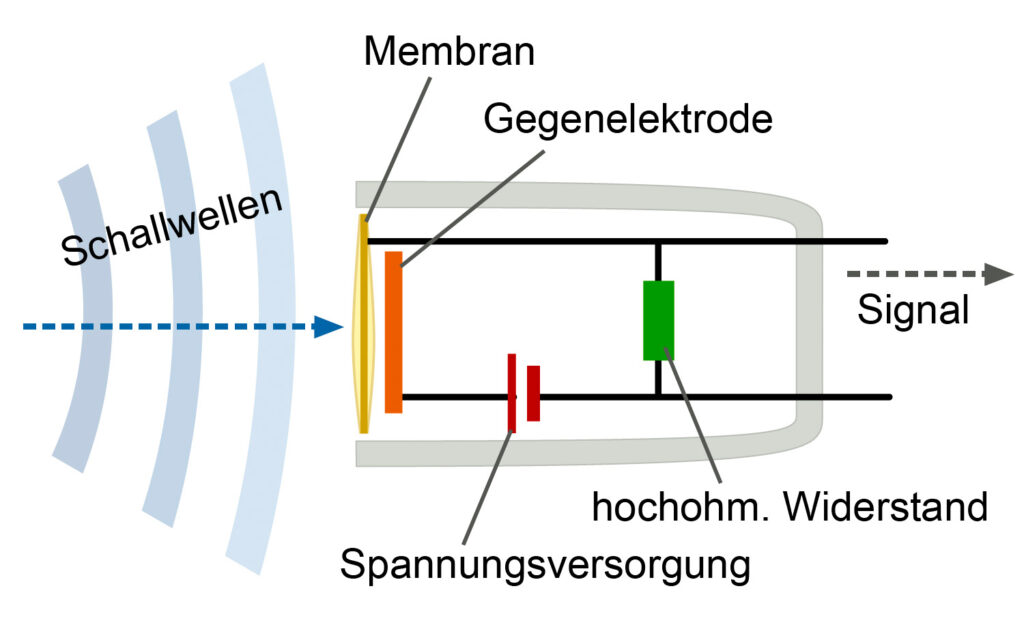
These voltage changes are ultimately an electrical image of the sound waves - nothing more than our electrical audio waves. However, because these waves are very small and weak, condenser microphones have a built-in preamplifier that amplifies these signals to make them strong enough to record.
Most condenser microphones require an external power source, known as phantom power, to supply both the preamplifier and the condenser's basic charge. Phantom power is usually supplied through the same cable that carries the audio signal (usually an XLR cable).
Condenser microphones with double diaphragm
Many condenser mics, especially expensive ones, have two diaphragms instead of one. These are placed back to back so that each picks up sound from one direction. This allows you to change the directional characteristics of the microphone.
The signals from the two diaphragms are combined differently in the microphone to create the different polar patterns. The voltage and polarity of the front diaphragm is always the same, while the voltage and polarity of the rear diaphragm can be changed.
By combining the two signals and changing the polarity and voltage, the three major directional patterns (cardioid, omnidirectional, and figure-of-eight) and all the intermediate patterns (supercardioid, wide cardioid, etc.) can be created. With modern microphones, it is even possible to switch continuously between the polar patterns.
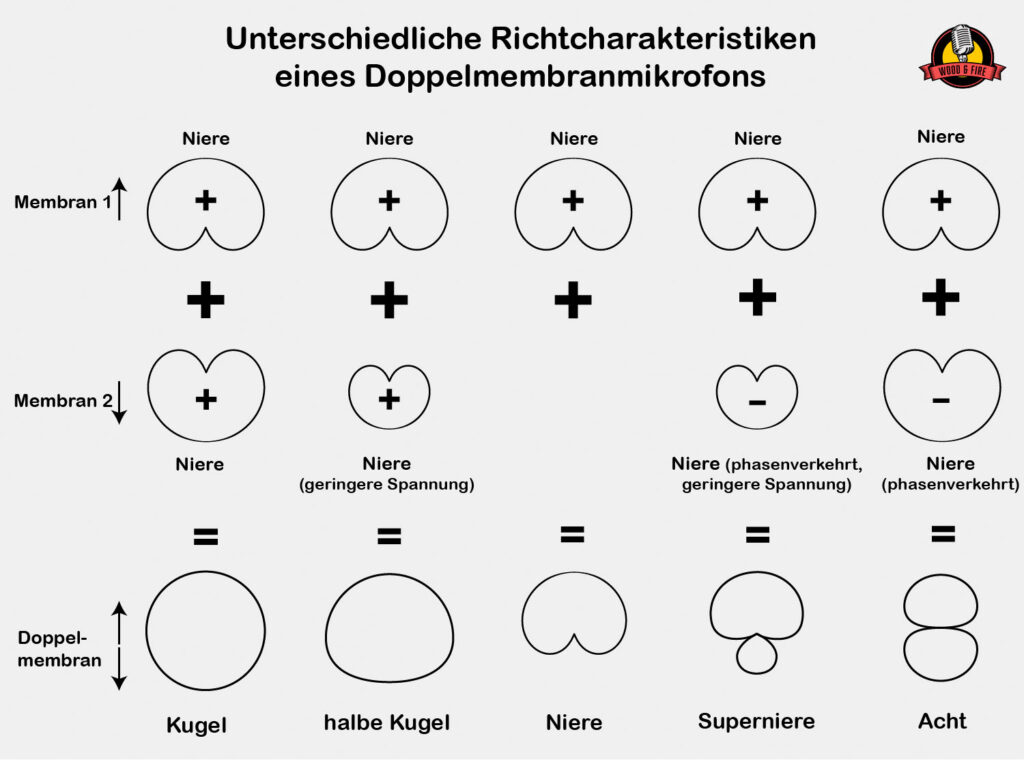
Large or small diaphragm?
Condenser microphones differ in the size of their diaphragm and are therefore divided into two categories: Large diaphragm condenser microphones and small diaphragm condenser microphones. Both types have a similarly detailed sound, but have some differences.
Small diaphragm microphones sound more natural and capture the sound unaltered. They have a constant directivity throughout the frequency spectrum, while large-diaphragm microphones have less directivity at lower frequencies.
They have better impulse response, because a small diaphragm can follow sound waves more accurately, and a wider frequency range than large-diaphragm microphones. This means they are better at picking up both very low and very high frequencies.
This means that they capture the finest details completely unaltered, making them ideal for instruments with a lot of transients, such as piano, guitar, percussion, or drums.
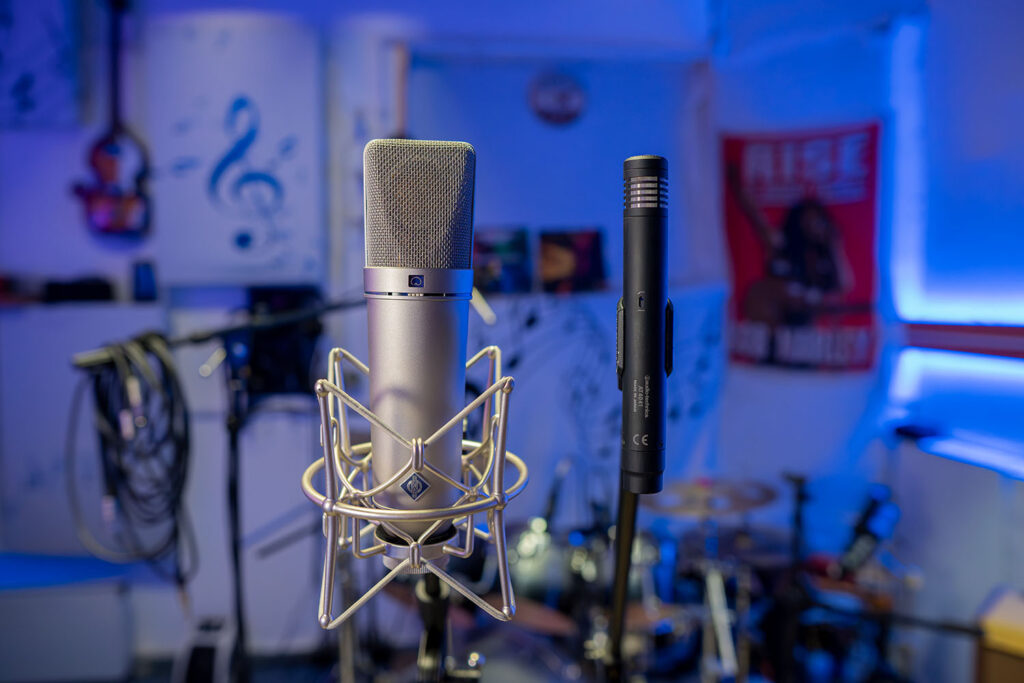
However, large-diaphragm microphones have some sonic advantages, especially for speech and vocals, because the lower directivity in the lower frequency range reduces the proximity effect and allows the singer to move more freely.
Large-diaphragm condenser microphones also make everything sound bigger and fuller, coloring the sound in a very pleasant and musical way. It can be said that they sound warmer and more characterful than small diaphragm condenser microphones. This is why they are very popular for vocals, but also for many other instruments such as bass drums, bass, etc. Especially for solo instruments or generally for central elements of the production.
Another important difference is self-noise: Small-diaphragm microphones always have higher self-noise than large-diaphragm microphones, which is why they are not suitable for voice-over recordings, which are particularly quiet. However, this inherent noise is not noticeable when recording instruments.
What are the advantages of a condenser microphone over a dynamic microphone?
Condenser microphones have several advantages over dynamic microphones:
Better impulse fidelity and accuracy
Condenser microphones are typically used for studio recording because of their incredibly detailed sound. They can pick up the finest nuances and provide a level of precision that a dynamic microphone cannot provide by design. In particular, small-diaphragm condenser microphones are better at capturing dynamic differences and transients.
This is why condenser microphones are almost always used for professional vocal recordings in the studio, as the voice is often the most important element of the song and must therefore sound very detailed.
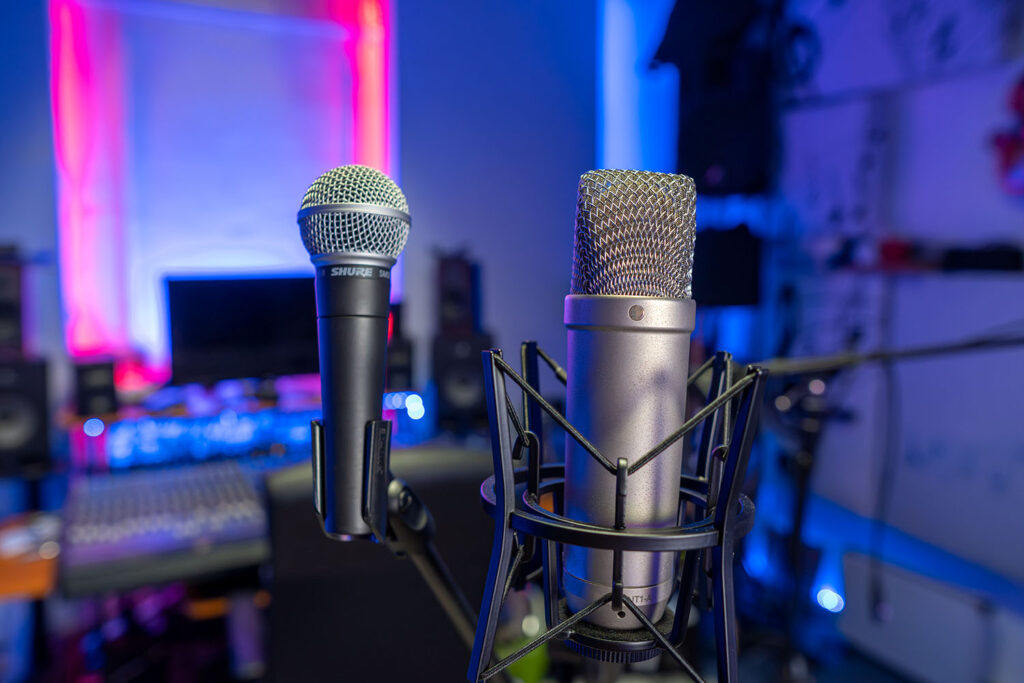
Wider frequency response
Condenser microphones have a wider frequency response, which means they can pick up a very wide range of frequencies, from very low to very high. This results in a more precise and detailed sound reproduction. The high frequencies, in particular, produce the coveted "high-fidelity" or "high-end" sound.
They also tend to have a more neutral frequency response than dynamic microphones, meaning they have less boost across the frequency spectrum and therefore sound more neutral. The exception, of course, are tube microphones, which color the sound more. They do not sound neutral, but they sound very nice and very detailed.
Little gain required
The diaphragm of a condenser microphone is more sensitive than that of a moving-coil microphone, so condenser microphones require much less preamplification. An additional preamplifier, as with dynamic microphones such as the Shure SM7B, is not required - the preamplifier built into the audio interface or mixing console is sufficient.
What are the disadvantages of a condenser microphone over a dynamic microphone?
Condenser microphones are not always the better choice - dynamic microphones are always used live anyway, but there are situations in the studio where dynamic microphones are better.
Lower maximum sound pressure level
Condenser microphones cannot pick up sound sources as loud as dynamic microphones, which is why, for example, dynamic microphones are generally used for close miking for drums recordings in the studio (condenser microphones are used for overhead or room miking because they are further away).
There are exceptions, however, such as bass drums, where condenser mics are often used because they have a lower frequency response than dynamic mics. Be careful not to turn up the up the preamp too much in this case.
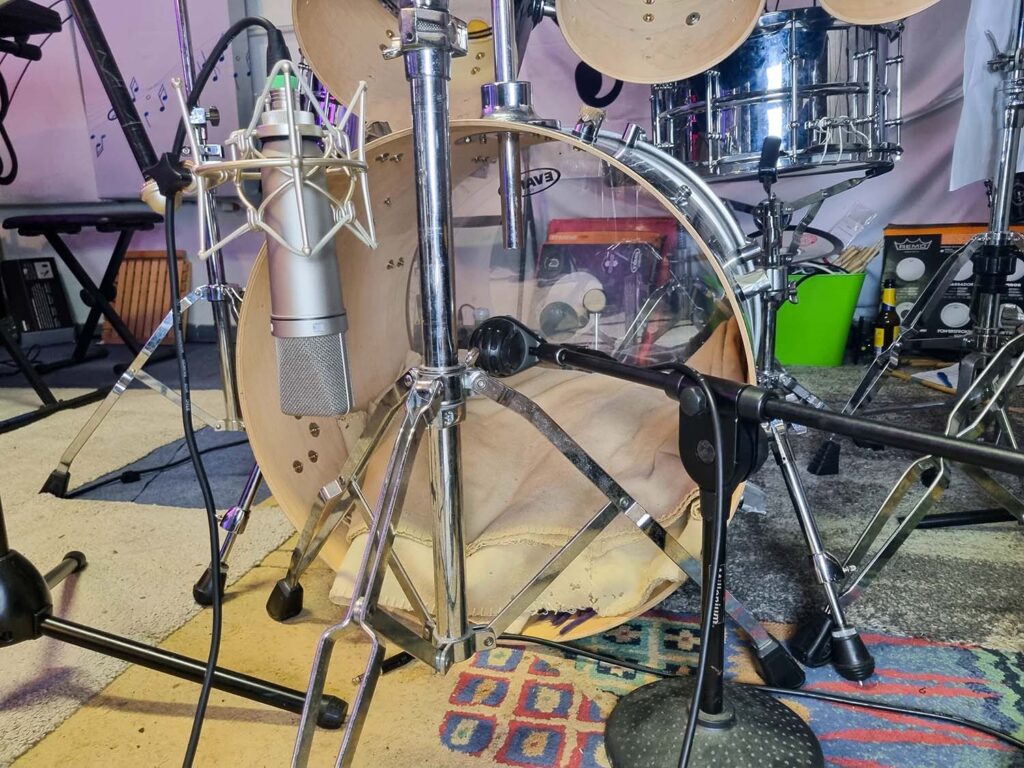
More susceptible to feedback
Condenser microphones are more susceptible to feedback and are therefore not used live. This is simply because the diaphragm is so sensitive that it picks up much more than a dynamic microphone.
The exception is the overheads for the drums, as condenser mics are usually used live as well. However, the drums are so loud that there is little risk of feedback live. Sometimes condenser mics are used for other instruments, but rarely for vocals, since the human voice is relatively quiet compared to most instruments.
Room acoustics are more apparent
If you don't have good acoustics in your home studio, condenser microphones are not the best choice because they pick up a lot more sound reflections from the room. Dynamic microphones, on the other hand, pick up more sound from the front and less from reflections, so they sound better in rooms that are not acoustically treated.
Therefore, condenser microphones should only be used with good room acoustics or in a vocal booth.
Where do you use a condenser microphone?
They are generally used in the studio because the acoustic environment is under control and there is no risk of feedback. These types of microphones can be used to their full potential in the studio because, as mentioned, they only sound good in rooms with good acoustics.
They capture the finest dynamic nuances, transients and details, making them perfect for studio recording. They just sound high quality. The extended frequency range (especially the very high frequencies) contributes to the sound being perceived as "high-end" or modern.
The extended bass range is another advantage: condenser microphones are often used to record bass drums, even live, because they are better at picking up low frequencies.
For example, microphones like the Shure Beta 91A or the beyerdynamic TG D71 are two very popular condenser boundary microphones for bass drums. They can pick up low frequencies better than a dynamic microphone, and the positioning inside the bass drum also prevents feedback in live situations.
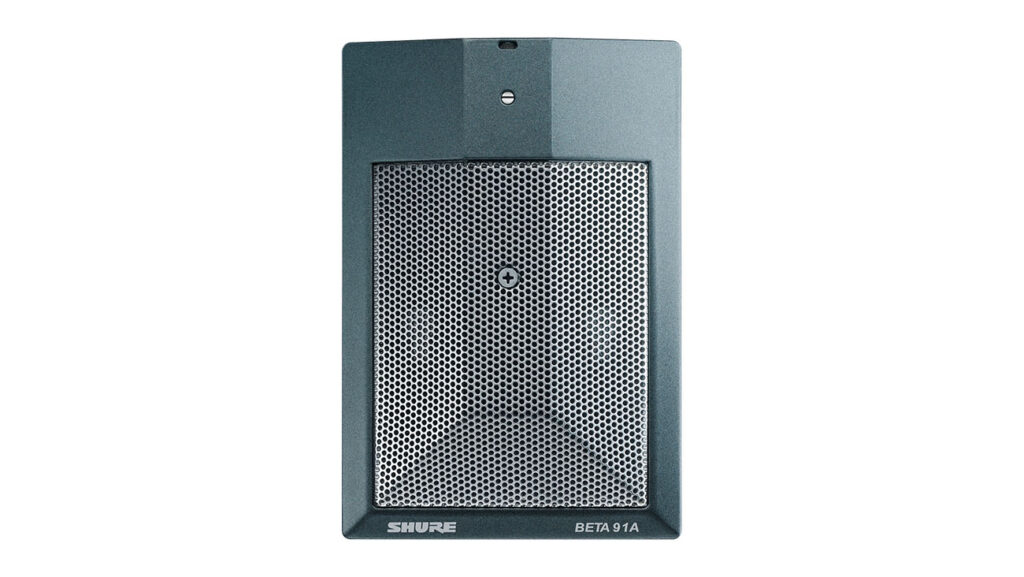
Which is better, a condenser or a dynamic microphone?
None is "better", each type of microphone has different advantages and disadvantages, so it may be better for some applications, but not for all.
Dynamic microphones are used live or in the studio with very loud instruments, while most condenser microphones are designed exclusively for studio applications. Most condenser microphones cannot withstand the sound pressure levels of dynamic microphones, but they sound more detailed, "bigger" and have a wider frequency range.
However, dynamic microphones sound better in acoustically untreated rooms because they simply pick up fewer sound reflections. In an untreated room, a $400 dynamic microphone like the Shure SM7B sounds much better than a $3,000 condenser microphone like the Neumann U87Ai - I know this from personal experience.
There is no such thing as a "better" microphone - each type of microphone is better in different ways. That's why every engineer/producer should have a combination of different microphones.
For vocal microphones, I recommend the Rode NT1A as a condenser microphone and the Shure SM7B as a dynamic microphone. These can be used to record not only vocals in any situation, but also most instruments.
Keep reading: The best microphones for kids





